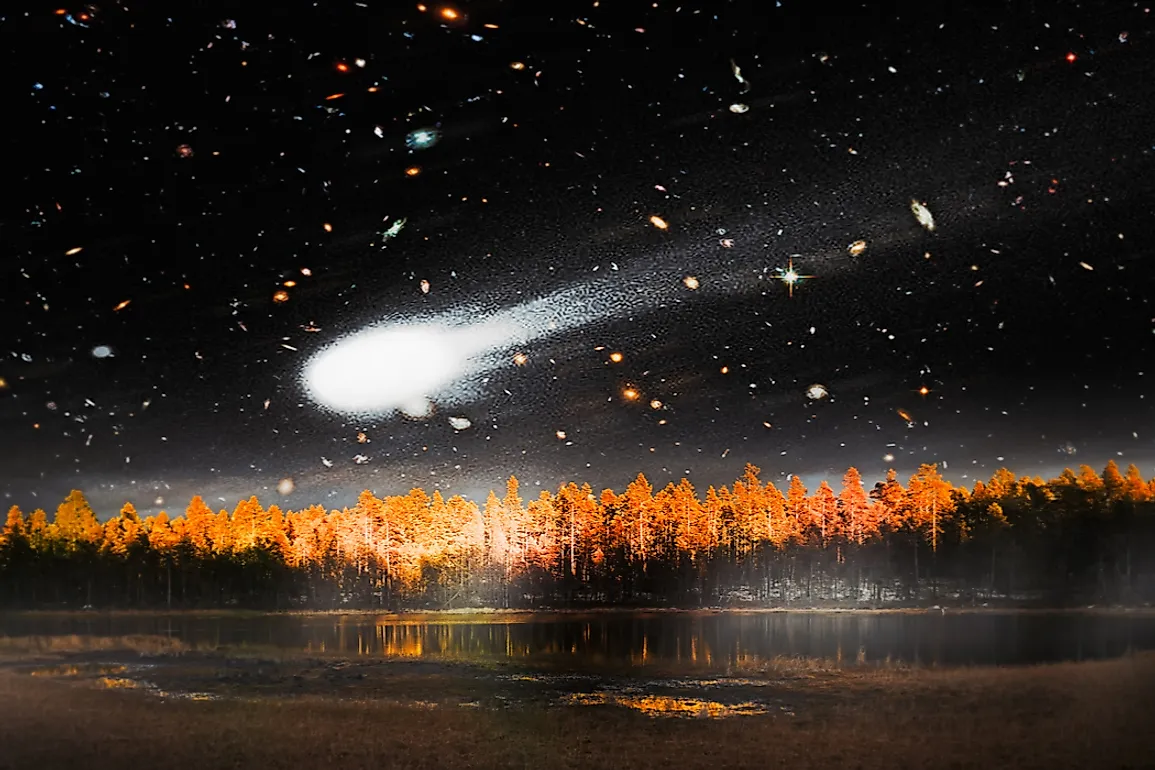What Was the Tunguska Event?

The Tunguska event was an explosion that occurred near the Podkamennya Tunguska River in Siberia, Russia on June 30, 1908. The explosion destroyed an estimated 770 square miles of forest cover in the sparsely populated East Siberian taiga region. However, no human casualties were reported. The cause of the large explosion is believed to have been caused by the air outburst of a meteoroid. Although the occurrence is classified as an impact event, no impact crater has ever been found. The large object is believed to have disintegrated in the atmosphere at between 3 and 6 miles before hitting the Earth, rather than hitting the Earth's surface and creating a crater. The Tunguska event is the largest impact event ever recorded on Earth.
Description of the Tunguska Event
The explosion occurred at approximately 7:17 AM on the morning of June 30, 1908. The local populations living northwest of Lake Baikal reported that a column of light as bright as the sun moved across the sky. Roughly ten minutes later, a deafening sound was heard, similar to artillery fire, and moved from the east to the north. Moments later, a powerful shock wave knocked people down and shattered windows up to hundreds of kilometers away. Fireballs and hot airwaves were detected in Denmark, Germany, the United Kingdom, and Croatia. Glowing light was visible from adjacent areas in the days that followed the explosion. Photographs of the glow were taken as far away as Scotland and Sweden. In the United States, a lower atmospheric transparency caused by suspended dust particles in the atmosphere was observed by the Smithsonian Astrophysical Observatory. It is estimated that the Tunguska event caused shock waves that would be the equivalent of an earthquake with a magnitude of 5.0 on the Richter scale.
Investigation of the Tunguska Event
The official investigation of the Tunguska event did not occur until 1921 and was led by Russian mineralogist Leonid Kulik. Records of Kulik's expedition indicated that the explosion was the result of a large meteorite impact. However, Kulik persuaded the Russian government to finance a larger expedition into the interior of the Tunguska region. A second expedition occurred in 1927, and Kulik's team, along with help from hunters of the local Evenki population, reached the south end of the explosion site. The team did not find a crater but discovered scorched trees that lacked branches but stood upright. Trees located further away were scorched and knocked down in directions leading away from the point of explosion. In 1938, an aerial survey was conducted and photographs were taken.
In the 1960s, with aid of improved technology, it was determined that the devasting effect had spread to a vast area of more than 830 square miles. The affected area had the shape of a large spread-eagled butterfly with wings that had a width of 43 miles and a body that was 34 miles in length. Small holes were also observed on the ground. More expeditions located small silicate and magnetite samples which had traces of nickel, leading to the conclusion that the occurrence was due to an object of extraterrestrial origin.
Geophysical Hypothesis of the Tunguska Event
Astrophysicists have developed a theory that the Tunguska event was the result of an explosion of more than 10 million tonnes of natural gas from the crust of the Earth. This hypothesis claims that gas leaking from the crust rose up to the atmosphere, then drifted downward, and was eventually ignited by a source such as lightning, causing the explosion.











